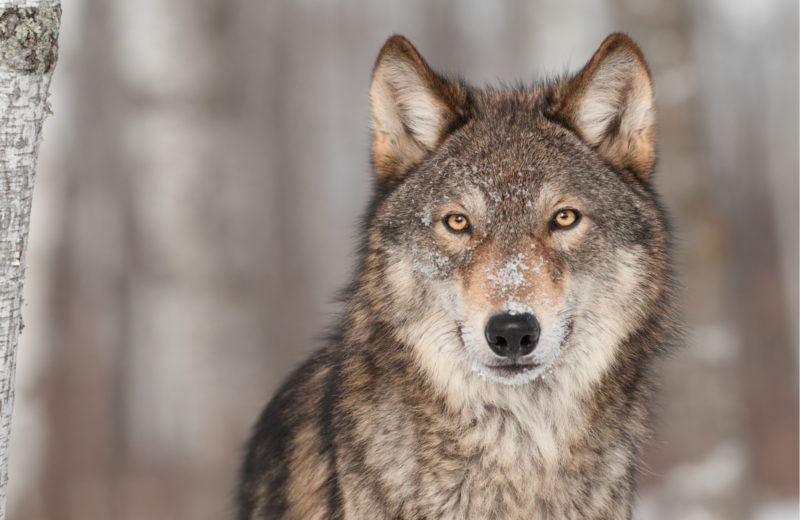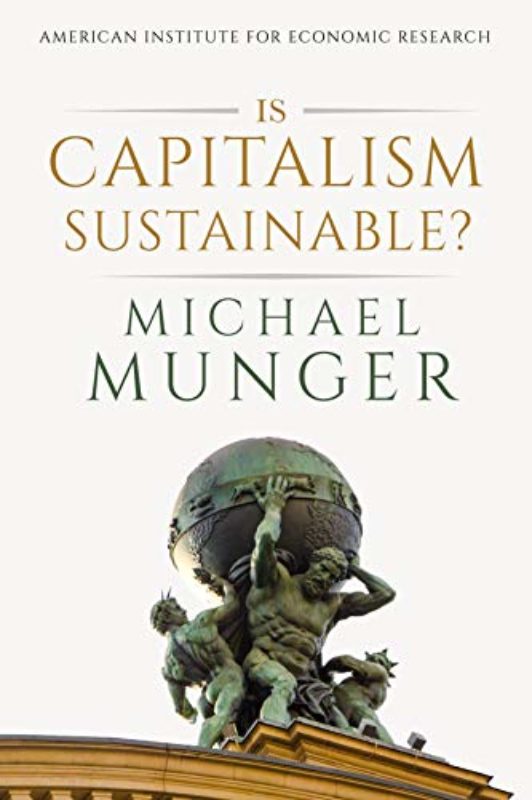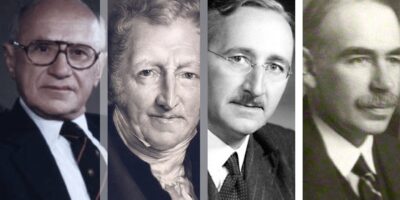How the Coase Theorem Solves the Problem of Wolves

The “Coase Theorem” is hard to understand because it’s so simple.
Ronald Coase was working on the “problem” of allocating frequencies in the 1950s. The U.S. Federal Communications Commission was dithering about how to ensure that frequencies being sold to private companies would go to the “best” uses.
Coase thought this was dumb; just auction them off, and allow resale. Then, either the company that owns the rights values them, or another company values the rights more and will buy them. So long as it is possible to buy and sell property rights, the rights will always be in the hands of the user who values them most. It’s true by definition.
Coase recognized an important qualification, “transaction costs.” He never defined transaction costs, on principle, because there is no all-inclusive definition. In the years since Coase wrote his famous article in 1960, analysts have realized the most important considerations are rules and property rights.
I’ll admit I’m a transaction costs nut, because I’m a student of Douglass North. North believed that most interesting problems in political economy come down to attempts to control or reduce transaction costs. One of the most important institutions, as has been recognized at least back to David Hume, is property rights.
If property rights are diffuse, hard to enforce, or expensive to exchange, it’s difficult for people to cooperate. In the frequency auction, if the government has regulatory restrictions, or otherwise makes it hard to buy and sell frequency use rights, then less socially useful stations and programs get on the radio and the new, better station that more people would enjoy never gets a chance to be heard.
In the past 30 years there have been some remarkable achievements applying the insights of the Coase Theorem to problems in the environment. Many people have a visceral objection to using “market” logic in environmental settings, but it’s hard to argue with the results. (If you are interested in those results, take a look at the descriptions given here.) The problem is that the favored solution of many environmentalists on the left is the use of commands, regulations that dictate certain behaviors that are seen as good and outlawing behaviors seen as bad. Combined with enforcement, that amounts to increasing the transaction costs of acting badly.
Coase, of course, was proposing a different solution: reduce the transaction costs of acting in accordance with the public interest. Now, defining the public interest is hard, but the point is that given some political determination about what is good for the environment, we still usually have two choices: use commands and regulation, or else use incentives and property rights. Let’s consider an example.
Wolves are a naturally evolved, and well-adapted, species of predator that were once common in the Central and Western portions of the northern U.S. They played an important role in limiting the size of elk herds. But wolves were hunted to near-extinction, and nearly driven out of this enormous land area by the 1930s. The reason was understandable: wolves found cattle, sheep, goats, and almost any other kind of domesticated animal to be quite tasty, and usually slower than elk to boot. An adult wolf can be three feet high at the shoulder, and weigh more than 120 pounds. Plus, they hunt in organized packs; wolves are formidable.
Removing wolves meant a lot fewer cows and sheep were lost to predators. But it also meant that elk herds burgeoned, often tearing up the tender shoots and other vegetation growing on stream banks. Rivers and creeks throughout the region eroded, tore up their banks, and in many cases took out the cottonwood trees that had once stabilized the flow of the streams. Water ran off rather than percolating into the soil, and the face of the land began to change rapidly.
Starting in the 1990s, the U.S. Fish and Wildlife Service began to reintroduce wolves into several parts of the northern states, in Idaho, Montana, and Wyoming. The results were better, occurred faster, and have had more wide-reaching effects than almost anyone expected: hungry wolves ate elk, there was much less pressure on river systems, and the previous ecosystem of plants and animals such as beavers were quickly reestablished. As a recent article in Ecohydrology notes:
Recent increases in tall willow heights, greater canopy cover, well‐vegetated streambanks, and the recent development of an inset floodplain all pointed towards a riparian/aquatic ecosystem beginning to recover. Overall, results were consistent with a landscape‐scale trophic cascade, whereby reintroduced wolves, operating in concert with other large carnivores, appear to have sufficiently reduced elk herbivory in riparian areas to initiate the recovery of Blacktail Deer Creek’s riparian plant communities and stream channels.
Of course, the reintroduction of wolves for a “public interest” policy of restoring damaged streams, wetlands, and habitat for native plants and animals had what economists call an “externality:” the wolves still had a nice breakfast of beef or mutton, taken from land of the thousands of privately owned ranches in the wolves’ new territory.
Now, in the legalistic mind of many in the environmental movement, the solution to this “conflict” is obvious: make it illegal to shoot wolves. But there are two problems with this approach. First, there is a problem of basic fairness: it may be true that there are enormous benefits to the society, through the environmental improvements of huge areas of wildland, that result from a healthy and diverse “guild” of large predators, as scientists call the populations of wolves, bear, mountain lions, and so on. But we are asking a small number of people—ranchers and their families—to bear those costs, almost alone.
In effect, the policy itself imposes an externality on ranchers: wolves are good, but the side effect on ranchers is bad. If the benefits are large and extend to the entire nation, why must ranchers be the only ones to pay the costs?
Second, the idea that “protecting” wolves by listing them as “Endangered” is nonsense. Having grown up on a rural farm myself, I can assure you that it may be 20 miles or more to the nearest law enforcement office, the sound of gunfire is not cause for alarm, and in any case if a rancher’s neighbors, likely ranchers themselves learn that a cattle-killing wolf has been shot they are not likely to report it to the authorities. They might bring over a nice warm pie, though, in gratitude.
What this problem needs is the environmental Coase Theorem.
Let us grant that it’s really true that “we” value the presence of wolves in the West, partly for the inherent value of a balanced ecosystem in which wolves have long played a role, and partly for the substantial benefits of restoring plants and wildlife in river systems.That might not be true, of course, but it’s the premise of the current policy. In that case, it must be possible (that’s why it’s called a “Theorem”!) for the gainers to negotiate with and compensate the losers, because the total gains exceed the total losses. All that is necessary is to find a way to assign tradable property rights that make wolves assets rather than liabilities.
To date, the environmental Coase Theorem has been applied in two ways: compensation for ranchers who lose cattle to wolves, and payments to ranchers who also “raise” wolves on their land. Let’s consider each in turn.
Compensation for loss: The logic of the Coase Theorem is that if the losses that result from introducing wolves are less than the value of having the wolves around, then it should be possible to arrange a property rights system that makes that result universally agreed upon. In other words, all parties should agree that it’s better to have wolves than not to have them. The basis for this claim is that the presence of wolves creates such large societal benefits that it should be possible to hold harmless anyone who loses out in the new system. In the case of the sales of radio frequency sales, the seller is willing to give up the rights to the frequency because he is paid an amount at least equal to how much he values that frequency. And the new owner values the frequency more, so the total value of the allocated use right is increased. But the seller would not give the rights away for free; his consent must be obtained voluntarily, by paying for rights he is giving up.
If I’m a rancher, I might agree that wolves are good for the ecosystem. But it costs me $500 if the wolves bring down a calf. So I’m opposed to wolves, and will shoot them if I can. However, if the state or some other organization agrees to pay me the value of the lost cattle, I am at worst indifferent and may actually support the policy. Instead of imposing the policy and forcing the rancher to absorb the costs, the Coasian policy compensates the rancher for his loss.
The ”Wolf Compensation Trust” is an organization that takes donations and compensates ranchers for lost livestock. Their web site is straightforward about the problem, and the solution:
Our goal is to shift economic responsibility for wolf recovery away from the individual rancher and toward the millions of people who want to see wolf populations restored. When ranchers alone are forced to bear the cost of wolf recovery, it creates animosity and ill will toward the wolf. Such negative attitudes can result in illegal killing.
Paying to Raise Wolves: An even more interesting, and entirely private, application of the environmental Coase Theorem is the example of “Wild Sky Beef.” WSB buys beef from licensed producers, and sells the product at a premium to people who support the reintroduction of wolves, or maybe who just like excellent beef. Todd Wilkinson of PERC describes the company this way:
[WSB’s] goal is to promote wildlife-friendly ranching and it follows a for-profit, market-driven model. Not only are ranchers paid more for their cows, but they are rewarded for providing proof if bears, cougars, or other animals pass through their pastures. But how?
Scientists with APR install remote, motion-sensing cameras and if the animals are documented on their land, ranchers are paid a bonus. Produce a picture of a black bear: collect $300; a cougar: $200. If grizzlies or wolves arrive in the area, the non-lethal visual bounty will rise even higher.
A rancher can make an extra $12,000 a year for having a pack of wolves,” says Sean Gerrity, APR’s president. With payments such as this, wolves become worth more alive than dead. If ranchers can find a way for wolves to co-exist with their cattle, they could come out much further ahead.
If people really do value wolves sharing habitat with cattle, they are willing to pay more for beef that such ranches produce. And private donations change nearby wolves from threats to income-producing assets. True, the rancher has to find ways to manage the problems that wolves cause. But on net the rancher is an ally rather than an enemy in the drive to establish wolves in the northwest and north central U.S.
As I said at the outset, the problem with the Coase Theorem is that it’s simple. The question of finding the highest-valued use for a resource should not depend on who has to pay the cost. But high transaction costs can be a problem; making it possible to imagine creative ways to compensate the losers in policy initiatives can make policies more effective, more fair, and more politically viable.











